Identification of cold stress responsive microRNAs in two winter turnip rape (Brassica rapa L.) by high throughput sequencing
- PMID: 29587648
- PMCID: PMC5870505
- DOI: 10.1186/s12870-018-1242-4
Identification of cold stress responsive microRNAs in two winter turnip rape (Brassica rapa L.) by high throughput sequencing
Abstract
Background: Low temperature is a major abiotic stress affecting the production of rapeseed in China by impeding plant growth and development. A comprehensive knowledge of small-RNA expression pattern in Brassica rapa under cold stress could improve our knowledge of microRNA-mediated stress responses.
Results: A total of 353 cold-responsive miRNAs, 84 putative novel and 269 conserved miRNAs, were identified from the leaves and roots of two winter turnip rape varieties 'Longyou 7' (cold-tolerant) and 'Tianyou 4' (cold-sensitive), which were stressed under - 4 °C for 8 h. Eight conserved (miR166h-3p-1, miR398b-3p, miR398b-3p-1, miR408d, miR156a-5p, miR396h, miR845a-1, miR166u) and two novel miRNAs (Bra-novel-miR3153-5p and Bra-novel-miR3172-5p) were differentially expressed in leaves of 'Longyou 7' under cold stress. Bra-novel-miR3936-5p was up-regulated in roots of 'Longyou 7' under cold stress. Four and five conserved miRNAs were differentially expressed in leaves and roots of 'Tianyou 4' after cold stress. Besides, we found two conserved miRNAs (miR319e and miR166m-2) were down-regulated in non-stressed roots of 'Longyou 7' compared with 'Tianyou 4'. After cold stress, we found two and eight miRNAs were differentially expressed in leaves and roots of 'Longyou 7' compared with 'Tianyou 4'. The differentially expressed miRNAs between two cultivars under cold stress include novel miRNAs and the members of the miR166 and miR319 families. A total of 211 target genes for 15 known miRNAs and two novel miRNAs were predicted by bioinformatic analysis, mainly involved in metabolic processes and stress responses. Five differentially expressed miRNAs and predicted target genes were confirmed by quantitative reverse transcription PCR, and the expressional changes of target genes were negatively correlated to differentially expressed miRNAs. Our data indicated that some candidate miRNAs (e.g., miR166e, miR319, and Bra-novel-miR3936-5p) may play important roles in plant response to cold stress.
Conclusions: Our work indicates that miRNA and putative target genes mediated metabolic processes and stress responses are significant to cold tolerance in B. rapa.
Keywords: Brassica rapa; Cold stress; Target gene; Turnip; microRNA.
Conflict of interest statement
Ethics approval and consent to participate
Not applicable.
Consent for publication
Not applicable.
Competing interests
The authors declare that they have no competing interests.
Publisher’s Note
Springer Nature remains neutral with regard to jurisdictional claims in published maps and institutional affiliations.
Figures
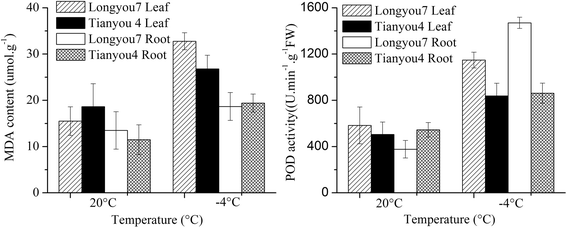
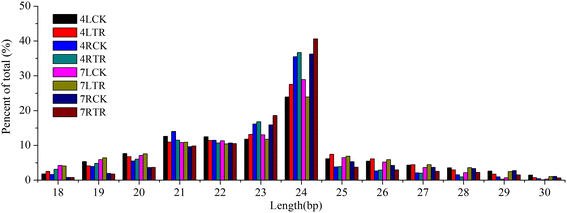
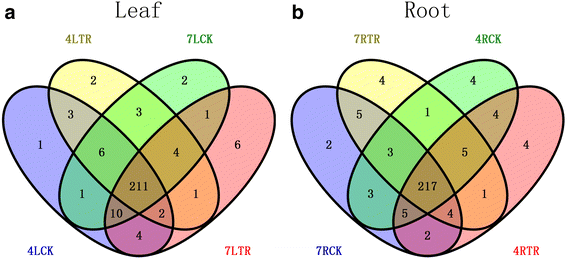
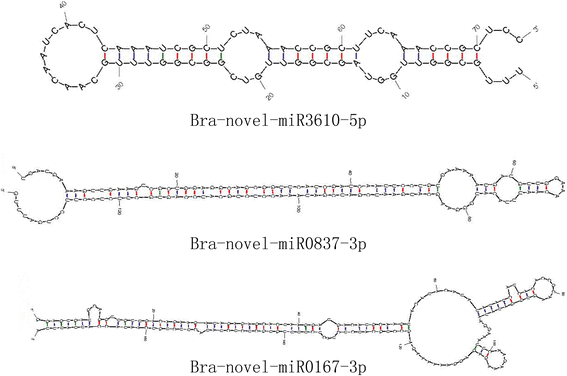
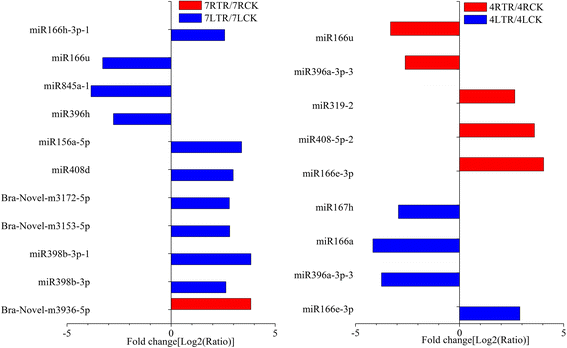
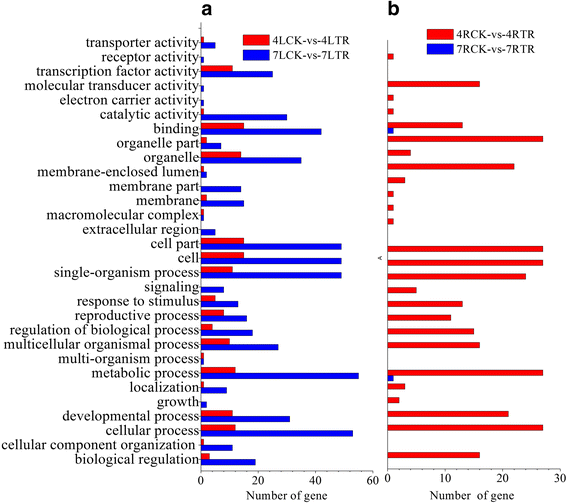

Similar articles
-
Identification of conserved and novel microRNAs that are responsive to heat stress in Brassica rapa.J Exp Bot. 2012 Jan;63(2):1025-38. doi: 10.1093/jxb/err337. Epub 2011 Oct 24. J Exp Bot. 2012. PMID: 22025521 Free PMC article.
-
iTRAQ-Based Quantitative Proteome Revealed Metabolic Changes in Winter Turnip Rape (Brassica rapa L.) under Cold Stress.Int J Mol Sci. 2018 Oct 26;19(11):3346. doi: 10.3390/ijms19113346. Int J Mol Sci. 2018. PMID: 30373160 Free PMC article.
-
Transcriptome Analysis Reveals Key Cold-Stress-Responsive Genes in Winter Rapeseed (Brassica rapa L.).Int J Mol Sci. 2019 Mar 1;20(5):1071. doi: 10.3390/ijms20051071. Int J Mol Sci. 2019. PMID: 30832221 Free PMC article.
-
Research progress on plant noncoding RNAs in response to low-temperature stress.Plant Signal Behav. 2022 Dec 31;17(1):2004035. doi: 10.1080/15592324.2021.2004035. Epub 2021 Dec 19. Plant Signal Behav. 2022. PMID: 34927551 Free PMC article. Review.
-
An Introduction to Methods for Discovery and Functional Analysis of MicroRNAs in Plants.Methods Mol Biol. 2019;1932:1-14. doi: 10.1007/978-1-4939-9042-9_1. Methods Mol Biol. 2019. PMID: 30701488 Review.
Cited by
-
Conservation and Diversity of miR166 Family Members From Highbush Blueberry (Vaccinium corymbosum) and Their Potential Functions in Abiotic Stress.Front Genet. 2022 May 16;13:919856. doi: 10.3389/fgene.2022.919856. eCollection 2022. Front Genet. 2022. PMID: 35651935 Free PMC article.
-
Integrated sRNA-seq and RNA-seq Analyses Reveal a microRNA Regulation Network Involved in Cold Response in Pisum sativum L.Genes (Basel). 2022 Jun 22;13(7):1119. doi: 10.3390/genes13071119. Genes (Basel). 2022. PMID: 35885902 Free PMC article.
-
Identification of MicroRNAs and Their Targets That Respond to Powdery Mildew Infection in Cucumber by Small RNA and Degradome Sequencing.Front Genet. 2020 Mar 26;11:246. doi: 10.3389/fgene.2020.00246. eCollection 2020. Front Genet. 2020. PMID: 32273882 Free PMC article.
-
Glutathione imparts stress tolerance against Alternaria brassicicola infection via miRNA mediated gene regulation.Plant Signal Behav. 2022 Dec 31;17(1):2047352. doi: 10.1080/15592324.2022.2047352. Plant Signal Behav. 2022. PMID: 36184871 Free PMC article.
-
Identification of microRNAs That Provide a Low Light Stress Tolerance-Mediated Signaling Pathway during Vegetative Growth in Rice.Plants (Basel). 2022 Sep 28;11(19):2558. doi: 10.3390/plants11192558. Plants (Basel). 2022. PMID: 36235424 Free PMC article.
References
-
- Arbaoui M, Balko C, Link W. Study of faba bean (Viciafaba L.) winter-hardiness and development of screening methods. Field Crops Res. 2008;106(1):60–67.
-
- Kerepesi I, Bányai-Stefanovits E, Galiba G. Cold acclimation and abscisic acid induced alterations in carbohydrate content in call of wheat genotypes differing in frost tolerance. J Plant Physiol. 2004;161(1):131–133. - PubMed
-
- Frentzen M, Nishida I, Murata N. Properties of the plastidial acyl-(acyl-carrier-protein): glycerol-3-phosphate acyltransferase from the chilling sensitive plant squash (Cucurbita moschata) Plant Cell Physiol. 1987;28(7):1195–1201.
MeSH terms
Substances
Grants and funding
LinkOut - more resources
Full Text Sources
Other Literature Sources

